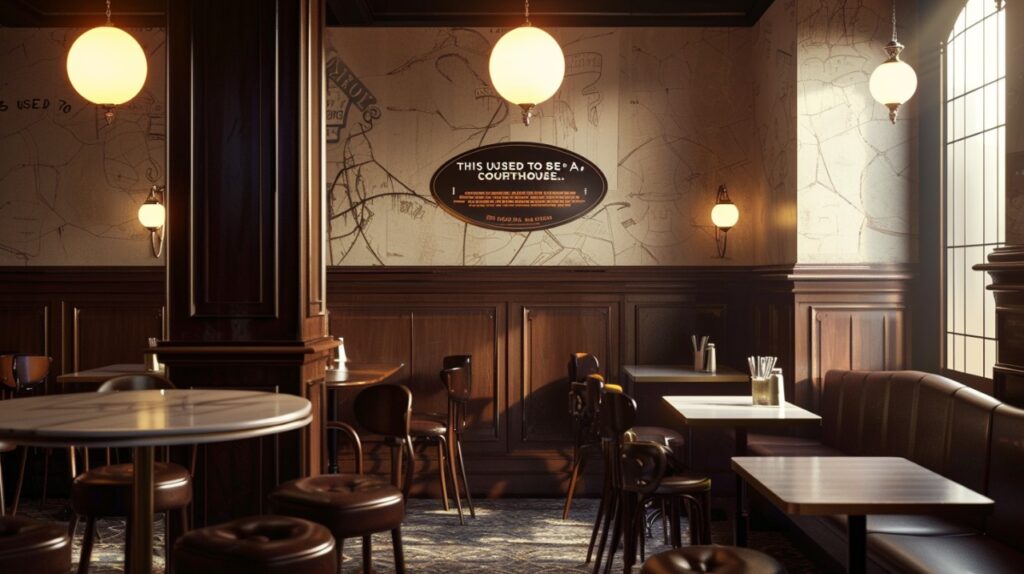
Architectural Amnesia: The Places We Choose to Forget
There’s something almost tragic about an old building getting a makeover. It’s like seeing an aging movie star after a too-aggressive facelift—smoothed, stretched, unrecognizable. The wrinkles that once whispered secrets of late-night rendezvous, heated debates, and stolen kisses are erased. In their place: something polished, something sanitized, something forgetful.
It happens so often, so quietly, that we don’t even notice. One day, the corner bookstore where you used to get lost in stories is gone, and in its place stands a sleek, sterile boutique selling overpriced candles. The movie theater where a first date bloomed into something unforgettable? Now a co-working space filled with muted keyboards and quiet ambition. The bar where revolutionaries once planned in hushed voices? A minimalist café with oat milk lattes and soft jazz. The bones remain, but the soul? The soul has been evicted.
They call it revitalization. Progress. Adaptive reuse. Words that make it sound noble, necessary. And maybe it is. Maybe cities must shed their pasts like old skins to survive. But in doing so, they forget. And forgetting is a kind of death, isn’t it?
It’s funny how we celebrate the past in fragments, little curated glimpses that fit the aesthetic of nostalgia. A carefully preserved brick wall inside a glass-and-steel office tower. A vintage sign kept for Instagram appeal. A plaque on a café wall that says, “This used to be a courthouse. ” A whisper of what once was, swallowed by what now is.
But what about the details that can’t be neatly preserved? The way wooden floors creaked under the weight of a century’s worth of footsteps. The carved initials on a forgotten column, left behind by lovers who never made it past summer. The scent of old books mixing with the dust of forgotten stories. Those things don’t make it into the new blueprint. They don’t fit into modern design.

And it’s not just the buildings that change—it’s us. We rewrite our memories the way architects redraw blueprints, adjusting the details to suit the present. We tell ourselves that the café was never that charming, that the bookstore was always a little too dim, that the bar had lost its charm long before it vanished. We make peace with the new by convincing ourselves the old wasn’t that special. But deep down, in the quiet spaces between nostalgia and reality, we know something has been lost.
Buildings, like people, carry their histories in layers. Strip away enough, and they become something else entirely. A fresh coat of paint, a new identity, a rewritten story. But is it truly new, or just a different disguise over the same old bones? If every place is rewritten again and again, what happens to the stories that once lived there? Do they linger in the cracks, waiting to be remembered, or do they fade entirely, like ink washed from a page?
Maybe the real tragedy isn’t that places change. It’s that we pretend they never were anything else. That we walk through spaces that once held so much, feeling only the crisp perfection of what they’ve become, never questioning what had to be erased to make them so.
Perhaps the real tragedy isn’t just that buildings forget, but that we teach them how. We strip them of their pasts, paint over their scars, hush their stories until they no longer remember who they used to be. We call it progress, but maybe it’s just erasure with better branding. We prefer them this way—tidy, polished, manageable. No ghosts, no rough edges, no inconvenient history. Just another pretty structure with no memory of its own existence.
And yet, some echoes refuse to be silenced. Maybe, just maybe, as we sip our coffee in a space that was once something else entirely, the walls are holding their breath. Waiting for someone to look past the fresh paint, to press their palm against the brick and listen. Waiting to be remembered—not for what they have become, but for everything they once were.




